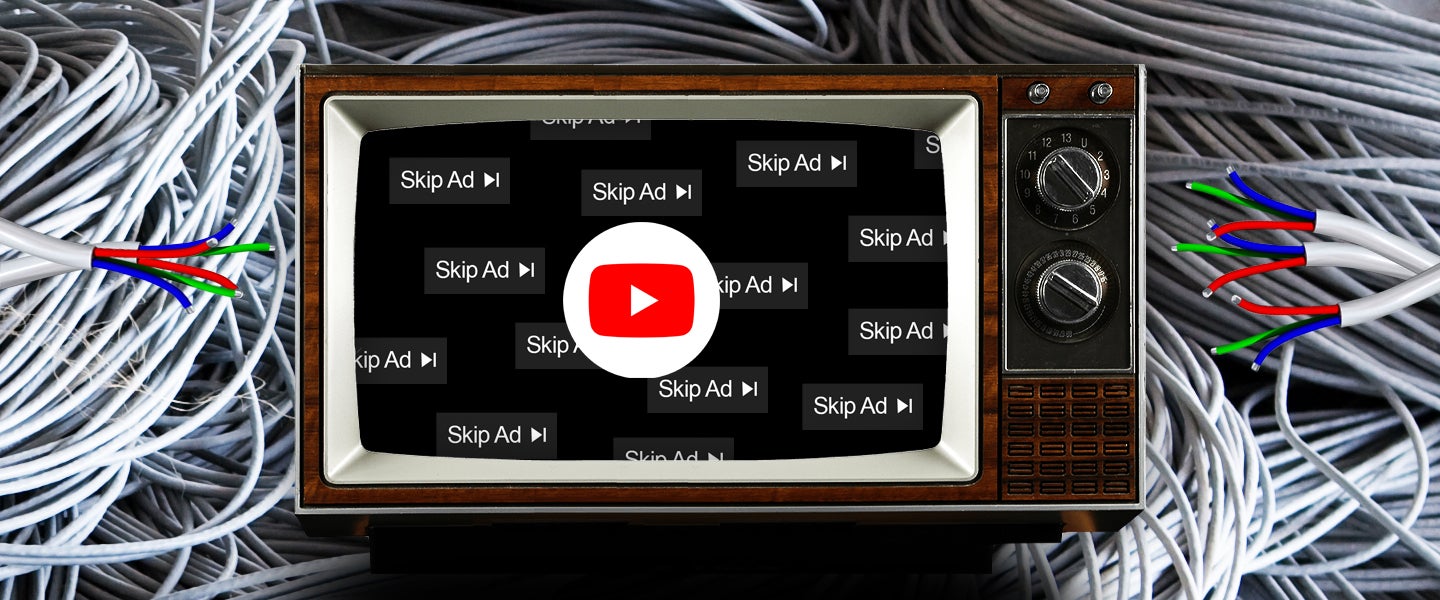The mass media conglomerate NBCUniversal recently began offering its Xfinity customers a preview of “Peacock,” a subscription streaming service that’ll be officially launching widely in July. For the most part, the new streamer’s business model will resemble competitors like Netflix, Amazon Prime and Disney+, featuring a mix of original programming — including Olympic sports, assuming the Olympics eventually happen — and established audience favorites from NBC’s library, such as The Office and Parks and Recreation.
One big difference for Peacock, though: The service will also have a free, ad-supported tier, for viewers willing to suffer through a few commercial breaks and some reduced choices, as a tradeoff for avoiding yet another monthly paid subscription. If this proves popular, maybe the already ad-supported Hulu will follow suit and offer a free option. Maybe the likes of Disney, Apple and Criterion will start providing a small but significant sampler of their programs, sponsored by advertisers.
What would we have then?
Well… the television of the 20th century, more or less.
This is the model that survived and thrived for decades. Once upon a time, consumers bought a piece of technology that allowed them to receive broadcast entertainment and then many of them never paid another dime. The advertisers ponied up the money for the shows; the audience just enjoyed them. Why couldn’t we bring that system back, for the digital era?
Here’s the thing: We kind of already have. Free, ad-supported streaming services abound; they’re just not especially well-publicized. Sure, if you specifically want to watch Tiger King and The Marvelous Mrs. Maisel, you have to pay for a subscription to Netflix and Amazon, respectively. But if you just want to watch whatever happens to be available — and you’re not averse to a break in the action every eight minutes or so for a block of commercials — then you could theoretically eliminate nearly all your bills for entertainment, aside from what you pay for your internet. Via whatever method you currently use to stream media to your TV, computer or mobile device, you could, right now, enjoy a surprising amount of quality content, gratis.
If that’s something that sounds appealing to you — becoming an extreme cord-cutter — here are some of the best services to try. These aren’t the only free and/or ad-supported options out there (a few more worth exploring: FilmRise, Popcornflix, CW Seed, Voleflix and Xumo), but this list should give you an idea of the range of choices, for those who prefer channel-surfing to binge-watching.
Tubi
Arguably the most fully loaded of the ad-supported streamers, Tubi has deals in place with Paramount, MGM and Lionsgate (among others) to carry thousands of movies and TV series on a platform that’s easily searchable by title or genre. Want to watch classic TV crime dramas? Telenovelas? Stand-up comedy specials? Kung-fu movies? The variety of programs on Tubi rivals Netflix, and the free service doesn’t seem as hesitant to tout the older films and shows it offers. (It even has categories called “Nostalgia TV” and “Not on Netflix.”)
Vudu
Like Tubi, Vudu offers a surprisingly deep catalog of movies and TV shows, many of which would’ve been middle-of-the-day cable television staples 10 or 20 years ago: films like Ronin and Bloodsport, and series like 3rd Rock From the Sun and Roseanne. Vudu is also a portal for renting and buying current VOD movies and TV, so account-holders can mix and match the recent hits they pay for with these freebies — the latter of which are conveniently gathered under the category heading of “free.”
IMDbTV/Crackle
Not enough people are aware that the popular movie and TV database IMDb also has its own streaming service, and that it sometimes carries shows and movies that are hard to find anywhere else. (Want to watch the brilliant science-fiction series Fringe? Look for it on IMDb TV.) The selection — and the organization — can feel a little random, though. Like a lot of the streamers on this list, it’s designed more for users who have no idea what they want to see, and who are willing just to click in and see what’s on.
The choices of TV shows and movies on the similar service Crackle makes a bit more sense. Though Crackle’s majority owner is no longer Sony Pictures, it still gets a lot of its content from Sony (and its many subsidiaries, such as Columbia, TriStar and Screen Gems). The programming runs the gamut from blockbusters to pulp trash to art films, with a healthy amount of classic television in the mix. This is the place to watch some otherwise hard-to-find favorites like NewsRadio and Fantasy Island, as well as the older animated Spider-Man series.
Stirr/Pluto
These services approximate the TV experience in two ways. First off, their programming is accessed via a channel grid, just like on a cable or satellite box. Available channels tend to be either genre-focused (like “Buzzr” for game shows or “Britcom” for, well, Britcoms) or show-focused (like “The Greatest American Hero” channel, which carries only episodes of The Greatest American Hero). In select areas, users can also access local news and relevant community information. The other thing that makes Stirr and Pluto like regular TV? The “on demand” options are limited. For the most part, when you pick a channel you have to watch whatever’s playing, even if it’s already started.
RetroCrush
RetroCrush’s specialty is anime, tapping into the deep, rich archives of Japanese animated movies and TV series by offering mostly obscurities from the 1970s, 1980s and 1990s. For fans of the medium, this is a good place to make discoveries. Be warned, though, that at the moment it’s available only as an app on mobile devices and set-top boxes, and not via a web browser.
Shout! Factory
Like NBC’s Peacock, Shout! also offers a paid subscription option, for those who want more selection and an ad-free experience. But the free version is still pretty stocked, featuring a lot of what’s made Shout! one of the best of the boutique DVD and Blu-ray labels. From classic Johnny Carson episodes of The Tonight Show to old Mystery Science Theater 3000 episodes to Roger Corman-produced 1970s drive-in fodder, this streamer does a fine job of preserving our pop culture past. And for those who’d rather not download the Shout! Factory app or go to the website (for whatever reason), it’s also available as a “channel” via Tubi, Amazon Prime, Stirr and a few other streaming services.
The Film Detective
It’s not a one-to-one comparison, but if you’re a fan of Turner Classic Movies, The Film Detective does offer a similarly curated experience, arranging a small selection of vintage cinema (plus a few TV series) in carefully chosen packages, some of which rotate in and out from month to month. The choices are limited, but the presentation is polished (with short, scholarly introductions for some films); and the expiration date for some titles/collections lends that sense of “better watch this before it goes away” familiar to cable subscribers. For those who love this service enough to pay for an ad-free option, subscriptions are available.
YouTube/Internet Archive
This won’t surprise anyone who’s ever gone looking for a half-forgotten, decades-old TV movie, sitcom or cartoon, but YouTube remains one of the best places to search for the long-lost. Granted, sometimes these programs disappear quickly from the site, because they’re not supposed to be there in the first place. And sometimes the quality is poor, because they were transferred from old videotapes or are altered in some way to dodge the copyright police. But films and series that aren’t available anywhere else — and likely never will be, either due to rights issues or due to a lack of financial incentive for the rights-holders — can often be found on YouTube. The Internet Archive, too, is a fine source for movies and TV shows that have otherwise fallen through the cracks.
Both sites also remain fun to explore just for the unique programming they offer, outside of traditional notions of audio-visual entertainment. The Internet Archive has an impressive collection of “ephemeral films” — corporate-sponsored educational programming and old commercials that document bygone eras in fascinating ways. On YouTube, meanwhile, you can find whole channels dedicated to POV roller-coaster videos, cooking demonstrations, vintage game shows or decades-old rock and pop concerts that aired on European TV networks.
The point is that there’s more to the streaming video experience than just the popular shows and movies everyone’s buzzing about right now. For those who want to be frugal — and who are willing to be adventurous — now is a great time to explore some of the fringes of the digital media. You’ll soon discover stranger things than Stranger Things.

